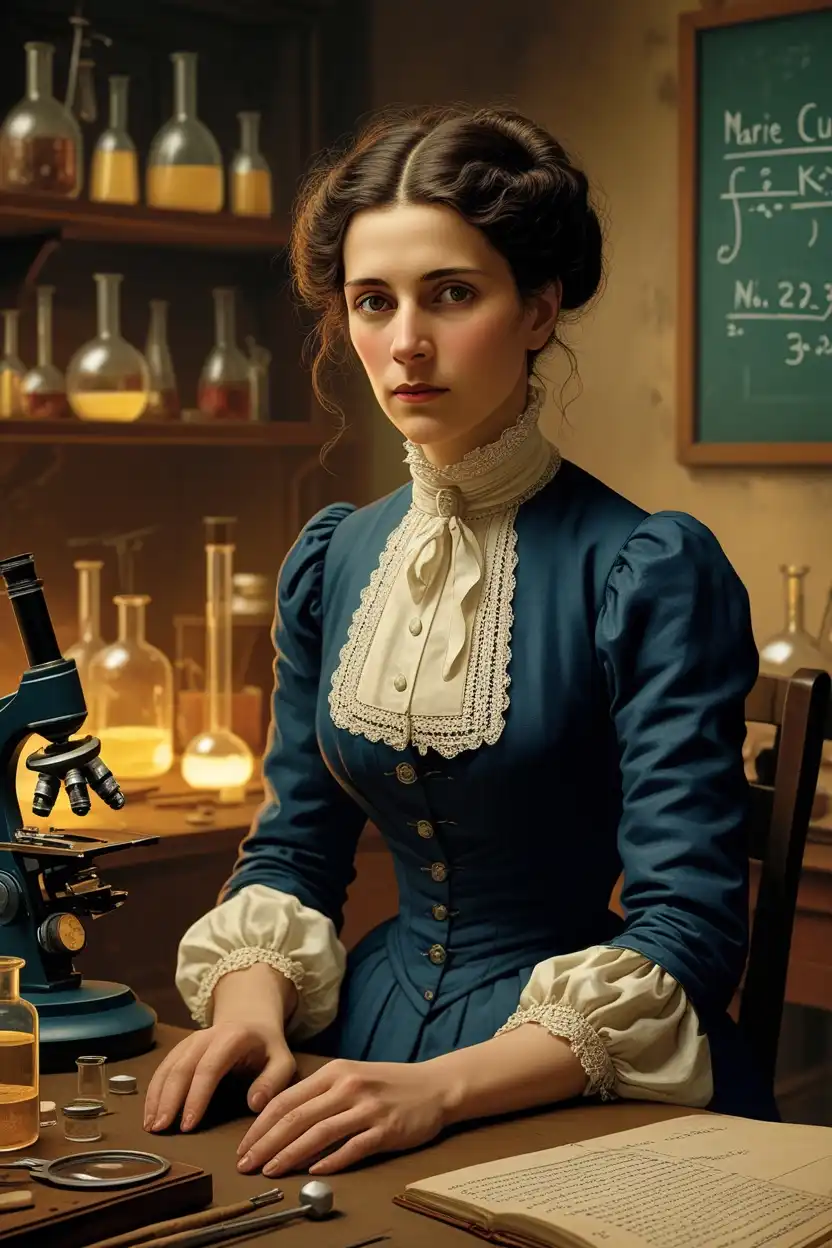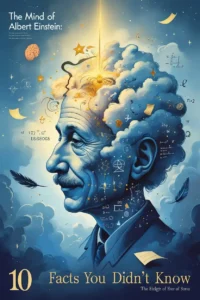Marie Curie, a name that resonates profoundly in the annals of scientific discovery, is a symbol of perseverance, brilliance, and groundbreaking achievement. Her contributions to science not only revolutionized our understanding of radioactivity but also paved the way for future generations of women in science. Despite facing numerous challenges in a male-dominated field, Curie’s unwavering determination and intellectual prowess cemented her legacy as one of the most influential scientists in history.
Early Life and Education
Born as Maria Skłodowska on November 7, 1867, in Warsaw, Poland, Marie Curie grew up in a family that valued education. Her father, a teacher of mathematics and physics, fostered her early interest in science. However, opportunities for women to pursue higher education were scarce in Poland at the time. Undeterred, Curie moved to Paris in 1891 to attend the prestigious Sorbonne University. There, she excelled in physics and mathematics, earning degrees in both subjects.
Her time at the Sorbonne was marked by hard work and sacrifice. Living in near-poverty, she often survived on bread and tea while dedicating herself entirely to her studies. This period of struggle laid the foundation for her later success, as she developed the resilience and focus that would define her career.
The Discovery of Radioactivity
Marie Curie’s journey into the world of radioactivity began when she partnered with her husband, Pierre Curie, a physicist she married in 1895. Together, they embarked on groundbreaking research into the mysterious rays discovered by Henri Becquerel emanating from uranium salts. It was Marie who coined the term “radioactivity” to describe this phenomenon.
Through meticulous experimentation, the Curies identified two new elements: polonium (named after Marie’s homeland, Poland) and radium. Their work required processing tons of pitchblende ore to isolate minute quantities of these elements—a task that demanded extraordinary patience and physical labor.
In 1903, Marie Curie became the first woman to win a Nobel Prize when she shared the Nobel Prize in Physics with Pierre Curie and Henri Becquerel for their collective work on radioactivity. This achievement was groundbreaking not only for its scientific significance but also for challenging societal norms about women’s roles in academia and research.
A Second Nobel Prize and Continued Impact
Tragedy struck in 1906 when Pierre Curie died in a street accident. Despite her profound grief, Marie continued their work with remarkable determination. In 1911, she achieved an unprecedented milestone by winning her second Nobel Prize—this time in Chemistry—for her discovery of radium and polonium and her investigation into their properties. She remains the only person to have won Nobel Prizes in two different scientific fields.
Curie’s research had far-reaching implications. Her discoveries laid the groundwork for the development of X-ray technology, which proved invaluable during World War I when she organized mobile X-ray units to assist battlefield medics. Her pioneering work also opened new avenues in medicine, particularly in cancer treatment through radiation therapy.
Breaking Barriers for Women in Science
Marie Curie’s legacy extends beyond her scientific accomplishments; she was a trailblazer for women in science. At a time when women were often excluded from academic and professional opportunities, Curie shattered barriers through sheer merit and determination. She became the first woman to teach at the Sorbonne and inspired countless women to pursue careers in science and research.
Her life was not without challenges. Despite her monumental achievements, she faced criticism and prejudice from some quarters of society and academia. Yet, she remained steadfast in her commitment to science and refused to let societal expectations define her path.
A Legacy That Endures
Marie Curie’s contributions to science have had a lasting impact on humanity. Her discoveries revolutionized physics and chemistry, and her work continues to influence modern medicine and technology. Institutions such as the Curie Institutes in Paris and Warsaw carry forward her legacy by advancing research in cancer treatment and other scientific fields.
Curie’s life is a testament to the power of curiosity, perseverance, and intellectual courage. She not only changed the course of science but also redefined what was possible for women in academia and beyond. Her story serves as an enduring source of inspiration for anyone striving to make a difference against all odds.
Marie Curie was more than just a scientist; she was a pioneer who changed science—and the world—forever.



